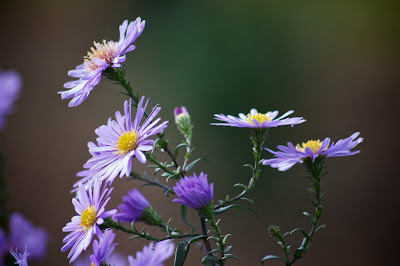Everywhere you point your camera there is an eycatching structure to complete the vista, such as the Rotunda; Gothic Temple; and one of two symmetrically placed Lakeside Pavilions (pictured below).
It is, apparently, one of the most influential gardens
It was the first major commission for the landscape architect Lancelot 'Capability' Brown, who is famed for his naturalistic, but of course totally unnatural, rolling landscapes
Monuments pictured below: Temple of British Worthies (with busts of the likes of Shakespeare, Milton, Pope and Newton); Temple of Venus (which, like several of the buildings appears to have been built without the aid of a plumb line); and the Shell Bridge.
It was inherited by Earl Temple, who, in the 1750s, was acknowledged as the richest man in England, and spent much of his money on the garden and house (which was designed or modified by such architects as Robert Adam). It is full of Roman-style monuments, such as this Doric Arch.
Late flowering colour: members of the Asteraceae or Compositae family, often known as aster, or daisy (part of the same family as sunflowers), useful pollen sources for bees.
The Lake Pavilions are attributed to Vanbrugh, but like many of the buildings aren't as impressive up close as they are seen from the house.
The lakes are home to many birds, including geese and swans.
One of the best realised buildings is the Temple of Ancient Virtue (above), designed in 1734 by William Kent. It is similar to the Temple of Vesta at Tivoli, but built with Ionic columns instead of Corinthian.
Probably the best known structure, and one of the most picturesque, is the Palladian Bridge over the eastern arm of the Octagon Lake - seen here with some pupils from Stowe School, which occupies the main house and several other large buildings. Other structures include: The Boycott Pavilions; Queen Caroline's Monument; and the Pebble Alcove (below).
Mushrooms growing in the woods







































No comments:
Post a Comment